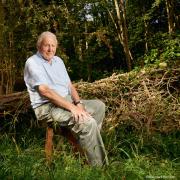Kent Wildlife Trust is looking to raise vital funds to help curb the decline of one of our most cherished animals
A century ago, barn owls were a common sight - a familiar and well-loved part of our countryside.
But now they are in trouble. The almost complete loss of natural grasslands, loss of nesting sites and the effect of agricultural chemicals has caused barn owls to decline by three-quarters in the UK, virtually disappearing from many parts of Kent.
And not only that; the few remaining natural grasslands exist in isolation, often separated by roads, making travelling between hunting grounds and nest sites even more perilous (road deaths are the most frequently recorded cause of barn owl mortality).
With these beautiful birds already under pressure, the impact of a cold winter can spell disaster.
The recent series of hard winters and the long, harsh spring of 2013 resulted in a shocking threefold increase in reported deaths of barn owls just before the breeding season, with numbers reaching an all-time low.
We can’t do much about the weather, but we can help increase the numbers of barn owls in Kent by ensuring that they have large areas of high quality habitats for feeding and nesting, to give them the best chance of survival – whatever the weather.
These are challenging times for barn owls. Over the last 60 years, 97 per cent of lowland grasslands (over which they hunt) and 50 per cent of hedgerows (which harbour mice, shrews and voles) have been lost.
There has also been a marked increase in the use of chemicals such as rodenticides. Old barns are being converted and with a lack of hollow trees due to Dutch elm disease, ash die back and other causes, nesting sites are in decline.
But Kent Wildlife Trust believes that this doesn’t have to be the end of the story for barn owls in Kent.
We know that, given the right conditions, wildlife can bounce back from adversity. A landscape with healthy, joined up wildlife habitats is the essential first step. n



























